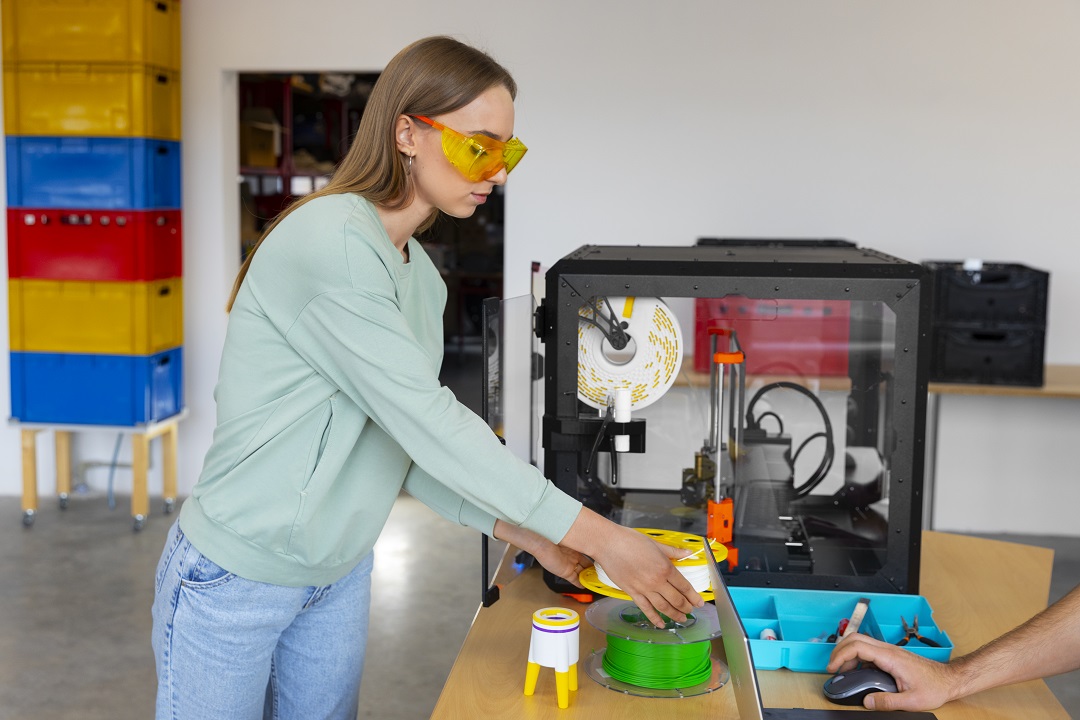Imagine being able to see heat. Sounds like something out of a science fiction movie, right? Yet, that’s precisely what infrared (IR) thermography allows us to do. This powerful technology captures the invisible thermal energy emitted by objects and transforms it into visible images. These images reveal temperature variations that can indicate underlying problems or inefficiencies.
From detecting electrical faults in buildings to monitoring machinery health in industrial settings, IR thermography is making waves across various sectors. It’s not just about spotting issues; it’s about preventing them before they escalate into costly repairs or dangerous situations. As we delve deeper into this remarkable technique, you’ll discover its numerous benefits and applications that highlight why IR thermography is becoming an essential tool for professionals everywhere. Let’s explore how this innovative approach works and the incredible advantages it offers!
How Does Infrared Thermography Work?
Infrared thermography operates on the principle of detecting heat emitted from objects. Every object, regardless of its state, emits infrared radiation. This radiation is invisible to the naked eye but can be captured by specialized cameras.
These cameras convert thermal energy into visible images known as thermograms. The colors in these images represent temperature variations—hot areas appear bright while cooler sections show up darker.
The technology uses sensors that respond to specific wavelengths of infrared light. By analyzing these emissions, technicians can identify issues like overheating components or insulation gaps.
Thermography does not require physical contact with the subject being inspected. This non-invasive approach makes it ideal for various applications where traditional methods might disrupt operations or damage materials.
Applications of Infrared Thermography
Infrared thermography finds its niche across various fields, showcasing versatility and effectiveness. In building inspections, it detects heat leaks, moisture intrusion, and insulation deficiencies. This helps in enhancing energy efficiency.
In the medical realm, IR thermography offers a non-invasive method to monitor body temperature variations. It aids in diagnosing conditions like inflammation or circulatory issues without any discomfort to patients.
The industrial sector benefits significantly from this technology as well. Regular maintenance checks can identify overheating electrical components or mechanical failures before they escalate into costly downtimes.
Additionally, agriculture utilizes infrared imaging for crop health assessments. Farmers can pinpoint areas needing attention based on temperature differentials within their fields.
Even law enforcement has embraced this technology for surveillance and search operations during low visibility scenarios. Each application highlights how diverse and impactful (IR) thermography can be across multiple industries.
Benefits of Using Infrared Thermography
Infrared thermography offers numerous advantages across various sectors. One of the most significant benefits is its ability to detect problems early. By identifying hotspots or temperature variations, potential issues can be addressed before they escalate into costly failures.
Another advantage lies in its non-invasive nature. Unlike traditional methods that may require physical contact or disassembly, IR thermography allows for inspections without interrupting operations.
Additionally, it enhances safety by reducing risks associated with equipment overheating or electrical faults. Regular thermal monitoring helps maintain optimal operating conditions and minimizes hazards.
The data collected through infrared imaging can also support predictive maintenance strategies. This proactive approach not only extends equipment lifespan but also optimizes resource allocation and reduces downtime.
Infrared thermography promotes environmental sustainability. By improving energy efficiency and reducing waste, businesses can contribute positively to their ecological footprint while saving on costs.
Common Uses in Different Industries
Infrared (IR) thermography finds applications across various industries, enhancing efficiency and safety. In electrical maintenance, it helps identify hotspots in connections, preventing potential failures.
In the building sector, IR thermography detects insulation issues and air leaks. This ensures energy efficiency and improves comfort levels for occupants.
Healthcare professionals utilize this technology to assess inflammation and monitor blood flow patterns. It proves invaluable for early disease detection.
The automotive industry benefits from IR thermography by monitoring engine temperatures and checking brake systems for overheating. This promotes vehicle safety while optimizing performance.
Manufacturing relies on thermal imaging to inspect machinery conditions. Regular assessments can prevent costly downtime due to equipment failure.
Even agriculture has adopted this technology to analyze crop health by monitoring temperature variations in plants. Farmers can make data-driven decisions that enhance yield quality and quantity.
Types of IR Cameras and Their Features
When exploring IR thermography, understanding the types of infrared cameras is essential. Each type comes equipped with distinct features tailored to various applications.
Handheld IR cameras are popular for their portability and ease of use. They often include built-in screens for immediate analysis, making them ideal for quick inspections.
Fixed-mount thermal cameras offer continuous monitoring capabilities. These are perfect for industrial environments, where constant temperature surveillance can prevent costly failures.
Advanced models feature high-resolution sensors, which provide clearer images and more accurate data. This precision is vital in medical diagnostics or research settings.
Another notable category is thermal imaging drones. Equipped with infrared technology, these drones capture large areas quickly from above, proving invaluable in search-and-rescue operations or building inspections.
Understanding these differences helps users select the right camera according to their specific needs and budget considerations.
Cost and Training Requirements for IR Thermography
Investing in infrared (IR) thermography involves both equipment costs and training expenses. High-quality IR cameras can range from a few hundred to several thousand dollars, depending on their features and capabilities. It’s essential to evaluate your needs before making a purchase.
Training is equally important for effective use of this technology. Certified courses are available that cover the principles of thermography, safety practices, and camera operation. These programs often lead to certifications recognized by industry standards.
Hands-on experience amplifies learning outcomes. Many organizations offer workshops where you can practice with real-world scenarios under expert supervision. This practical approach helps reinforce theoretical knowledge while building confidence in using IR equipment.
Budgeting for these elements ensures you maximize the benefits of infrared thermography without overspending or sacrificing quality training opportunities.
Considerations for Choosing an Infrared Camera
Choosing the right infrared camera requires careful consideration of various factors. Start by assessing your specific needs and application requirements. Different environments may demand distinct features.
Resolution plays a crucial role in capturing detailed images. Higher resolution allows for clearer imagery, which is vital for accurate analysis.
Thermal sensitivity is another key aspect to explore. A more sensitive camera can detect smaller temperature differences, enhancing diagnostic capabilities.
Portability matters too—if you need to move around frequently, opt for lightweight models that are easy to handle.
Battery life can’t be overlooked either; longer-lasting batteries ensure uninterrupted operation during inspections.
Additionally, consider the software compatibility of the camera. User-friendly interfaces and robust data management options streamline workflow and enhance productivity.
Don’t forget about budget constraints; invest in quality but keep financial limitations in mind while making your decision.
Safety Precautions and Best Practices for IR Imaging
When using (IR) thermography, safety should always be a priority. Begin by ensuring that the area being scanned is free of obstacles and hazards. This helps prevent accidents during the inspection process.
Wearing appropriate personal protective equipment is crucial. Depending on your environment, this could include gloves, goggles, or hard hats to protect against potential risks.
Before scanning any electrical equipment, make sure it’s de-energized when possible. If not, maintain a safe distance and follow strict protocols for working near live systems.
Be aware of environmental factors that may affect readings such as sunlight or reflective surfaces. These can lead to inaccurate measurements if not accounted for in your analysis.
It’s essential to document findings carefully and thoroughly. Clear records help ensure data accuracy and provide valuable insights for future assessments.
Future Potential and Advancements in IR Technology
The future of IR thermography is bright, with rapid advancements on the horizon. As technology evolves, we can expect more sophisticated sensors that enhance image resolution and accuracy.
Artificial intelligence integration will play a significant role in data analysis. AI algorithms can quickly identify temperature anomalies, making diagnostics faster and more reliable.
Portable devices are becoming more user-friendly and cost-effective. This accessibility opens doors for small businesses to utilize thermal imaging in their operations.
Moreover, applications in building energy audits and predictive maintenance are expanding. Industries recognize how valuable this technology is for preventing costly failures before they occur.
Research into new materials promises improved infrared emitters and detectors, broadening the scope of what’s possible in various sectors like healthcare and manufacturing.
As these innovations unfold, IR thermography will likely become indispensable across many fields.
Conclusion
Infrared (IR) thermography stands as a revolutionary tool across various sectors. Its ability to visualize temperature variations offers insights that traditional methods often miss.
The technology has grown significantly, making it more accessible and user-friendly. As industries continue to adopt IR thermography, the landscape of maintenance and diagnostics transforms.
Innovations in camera design are enhancing accuracy while reducing costs. This trend opens doors for small businesses and enterprises alike.
As awareness spreads about its benefits, we can expect an even wider range of applications in the future. The potential for improved safety measures and efficiency is immense.
For those considering integrating this technology into their operations, understanding its capabilities is key. Embracing IR thermography might just be the game-changer many industries need moving forward.
FAQs
Infrared (IR) Thermography is a powerful tool that has gained significant traction across various industries. Its ability to visualize temperature differences makes it an invaluable asset for maintenance and diagnostic purposes.
What exactly is IR thermography?
It uses infrared cameras to detect heat patterns and variations in temperature on the surface of objects. The technology operates based on the principle that all objects emit infrared radiation, which can be captured by specialized cameras. This non-invasive method provides real-time data, allowing users to make informed decisions quickly.
The applications of IR thermography are vast. From building inspections identifying insulation issues to electrical assessments pinpointing overheating components, this technique enhances efficiency and safety across sectors like construction, manufacturing, healthcare, and more.
FOR FERDUR INFORMATION:https://techlicss.com/

